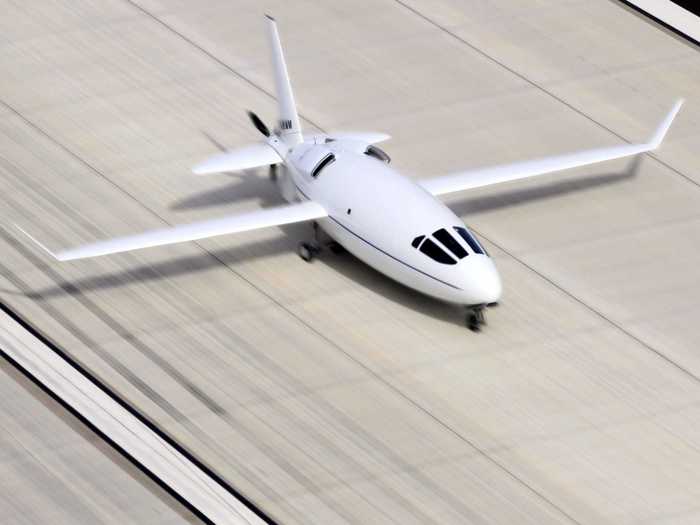
A rendering of Otto Aviation's new Celera 500L.Otto Aviation
Looks can be deceptive in aviation, especially with the new Celera 500L.
Otto Aviation's newest aircraft doesn't look like your average private plane but that's exactly why it's set to disrupt the industry and make private flying more accessible to the masses — if it can live up to its promises. The Celera 500L boasts incredible performance capabilities that are nearly unbelievable upon the first review and make it unlike even the most efficient aircraft currently roaming the skies.
The six-seater plane has an intercontinental range of 4,500 nautical miles at speeds of 450 miles per hour in cruise flight. And despite having the performance more akin to a multi-million-dollar Gulfstream, the Celera 500L is only powered by one engine that's made from aluminum.
If you can get past its looks, the Celera 500L is a great deal for private flyers at a cost of only $328 per hour, which would make it among the cheapest private charter aircraft on the market.
The timing couldn't be any more ideal with private flying surging in popularity among the wealthy who are choosing to pay for safety by chartering aircraft when they travel. With the Celera 500L boasting operating costs of only $328 per hour, it could give even middle-class flyers a safer alternative to the airlines without breaking the bank.
Take a closer look at Otto Aviation's Celera 500L.


Source: Otto Aviation


Source: Otto Aviation






Source: Otto Aviation

Source: Otto Aviation



Source: Otto Aviation

Source: Otto Aviation

Source: Otto Aviation


Source: Otto Aviation

Source: Aviation International News


Source: Otto Aviation

Source: Otto Aviation
 I spent $2,000 for 7 nights in a 179-square-foot room on one of the world's largest cruise ships. Take a look inside my cabin.
I spent $2,000 for 7 nights in a 179-square-foot room on one of the world's largest cruise ships. Take a look inside my cabin. Saudi Arabia wants China to help fund its struggling $500 billion Neom megaproject. Investors may not be too excited.
Saudi Arabia wants China to help fund its struggling $500 billion Neom megaproject. Investors may not be too excited. Colon cancer rates are rising in young people. If you have two symptoms you should get a colonoscopy, a GI oncologist says.
Colon cancer rates are rising in young people. If you have two symptoms you should get a colonoscopy, a GI oncologist says. Hyundai plans to scale up production capacity, introduce more EVs in India
Hyundai plans to scale up production capacity, introduce more EVs in India
 FSSAI in process of collecting pan-India samples of Nestle's Cerelac baby cereals: CEO
FSSAI in process of collecting pan-India samples of Nestle's Cerelac baby cereals: CEO
 Narcissistic top management leads to poor employee retention, shows research
Narcissistic top management leads to poor employee retention, shows research

Copyright © 2024. Times Internet Limited. All rights reserved.For reprint rights. Times Syndication Service.